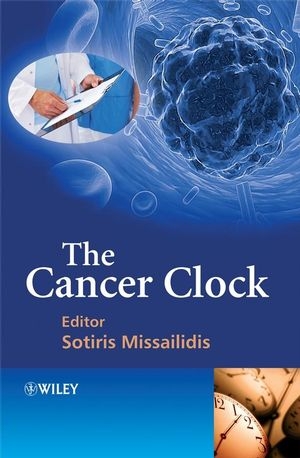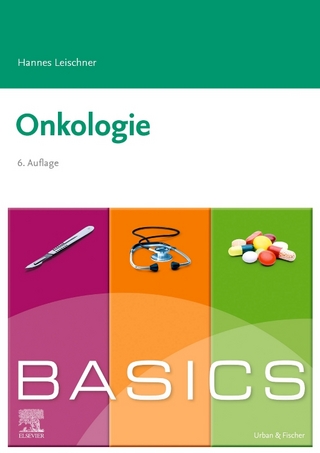
The Cancer Clock
Wiley-Blackwell (Verlag)
978-0-470-06151-0 (ISBN)
- Titel ist leider vergriffen;
keine Neuauflage - Artikel merken
The book closes with a discussion of patient care, pain control, nursing in cancer patients and rehabilitation processes and a final chapter that looks at the psychological and psychosocial aspects of the disease, from coping with the knowledge of having cancer to coping with the side effects of the treatments, family support and dedicated support groups. Written in a clear, accessible manner this book is an ideal starting point for students of pharmacy, pharmacology, the biomedical sciences and other related disciplines where an understanding of cancer as a whole is required.
* takes an interdisciplinary approach covering the chemistry, epidemiology, basic biology and genetics, radiology, medical physics, medicine, nursing, health and social welfare all associated with cancer diagnosis, treatment and care* explains the various causes of cancer and suggests actions for the prevention of the disease* includes chapters on current diagnostic tests, drug development and the techniques used in drug design both chemical and biological* considers current experimental therapeutic and diagnostic approaches and their potential for future therapeutic development* examines aspects of cancer care, physiotherapy, rehabilitation and the psychological aspects of the disease* includes self assessment questions/answers, summary sections and review questions and information boxes to enhance student understanding
Sotiris Missailidis, The Open University
Preface. List of Contributors. 1. Socioeconomic and molecular basis of cancer (David E. G. Shuker). 1.1 Introduction. 1.2 Diet and cancer. 1.3 Alcohol and cancer. 1.4 Tobacco and cancer. 1.5 Conclusions. 1.6 Self-assessment questions. 1.7 Further reading and resources. 2. Metal ions and Cancer (J. Anastassopoulou and A. Dovas). 2.1 Introduction. 2.2 Metal-DNA interactions. 2.3 Uranium-nucleotide interaction. 2.4 Toxicity and biological roles of copper. 2.5 Formation of free radicals by metal ions. 2.6 Radiolysis. 2.7 Biomolecular targets of free radicals. 2.8 Free radicals and metal ions in cancer. 2.9 Conclusions. 2.10 Self-assessment questions. 2.11 Further reading and resources. 3. Genetics and cancer (Sotiris Missailidis). 3.1 Introduction. 3.2 Genes and cancer. 3.3 Genomics. 3.3.1 Comparative genomics. 3.3.2 Oncogenomics. 3.3.3 Nutrigenomics. 3.4 Summary. 3.5 Self-assessment questions. 3.6 Further reading and resources. 4. Infection and cancer (Toni Aebischer and Thomas Rudel). 4.1 Viral infection as a cause of cancer. 4.1.1 Introduction. 4.1.2 Principles of oncogenic transformation by virus infection. 4.1.3 Human pathogenic viruses causing cancer. 4.2 Bacterial infection as a cause of cancer. 4.2.1 Introduction. 4.2.2 Bacterial infection causing malignancies: examples and evidence. 4.2.3 Common molecular machines linked to pathogenesis: Type 3 and 4 secretion systems. 4.2.4 Other bacterial effects potentially contributing to cancer. 4.2.5 Anti-infection strategies to prevent infection related cancer. 4.3 Summary. 4.4 Self-assessment questions. 4.5 Further reading and resources. 5. Inflammation and cancer (Nigel Courtenay-Luck). 5.1 Introduction. 5.1.1 Acute inflammation. 5.1.2 Chronic inflammation. 5.2 Acute inflammation. 5.2.1 Mediators of acute inflammation. 5.3 Chronic inflammation. 5.4 Drugs used in inflammation and cancer. 5.4.1 COX-2 inhibitors. 5.4.2 Antihypertensive drugs. 5.5 Evidence for a molecular link between inflammation and cancer. 5.6 Clinical relationship between inflammatory disease and cancer. 5.6.1 Inflammatory bowel disease. 5.6.2 Prostate cancer. 5.7 Discussion. 5.8 Self-assessment questions. 5.9 Further reading and resources. 6. Cancer diagnosis (Anna Batistatou and Konstantinos Charalabopoulos). 6.1 Blood tests for tumour markers. 6.1.1 Established and novel tumour markers in serum. 6.1.2 Various types of tumour markers in use. 6.2 Urine tests for tumour markers. 6.3 Smear tests and their association with tumour development. 6.4 Histopathology. 6.4.1 Benign tumours. 6.4.2 Malignant tumours. 6.4.3 Features of cancerous cells. 6.4.4 Immunohistochemistry. 6.5 Summary. 6.6 Self-assessment questions. 6.7 Further reading and resources. 7. Tumour imaging and therapy (Alan C Perkins). 7.1 Introduction. 7.2 X-ray imaging. 7.2.1 Mammography. 7.2.2 X-ray CT. 7.3 Nuclear medicine. 7.3.1 The gamma camera. 7.3.2 Positron emission tomography. 7.3.3 Intra-operative probes. 7.4 Ultrasound imaging. 7.4.1 Colour doppler imaging. 7.5 Magnetic resonance imaging. 7.6 Radiation therapy. 7.6.1 Therapeutic nuclear medicine. 7.6.2 Brachytherapy. 7.6.3 External beam radiotherapy. 7.7 Conclusions. 7.8 Acknowledgement. 7.9 Self-assessment questions. 7.10 Further reading and resources. 8. Surgery (Bassam Zeina). 8.1 Introduction. 8.1.1 What is surgery? 8.1.2 What is cancer surgery? 8.1.3 Who deals with cancer surgery? 8.1.4 Aims of cancer surgery. 8.2 Cancer surgery as a diagnostic procedure. 8.3 Cancer surgery as a preventive method against cancer. 8.4 Cancer surgery as a treatment or part of the treatment. 8.4.1 Surgery as a primary treatment. 8.4.2 Cancer staging. 8.4.3 Debulking (cytoreductive) surgery. 8.4.4 Palliative surgery (relieving symptoms or side effects). 8.5 Classic/traditional cancer surgery. 8.6 Other common techniques in cancer surgery. 8.6.1 Electrosurgery. 8.6.2 Cryosurgery. 8.6.3 Laser surgery and photo dynamic therapy (PDT). 8.6.4 Mohs' micrographic surgery. 8.6.5 Laparoscopic surgery. 8.6.6 Image-guided surgery. 8.7 Before and after cancer surgery. 8.7.1 Preparation for the surgery. 8.7.2 Anaesthesia. 8.7.3 Recovery. 8.8 Cancer surgery associated risks. 8.9 Informed consent. 8.10 Summary. 8.11 Self-assessment questions. 8.12 Further reading and resources. 9. Anticancer therapeutics (Teni Boulikas, Nassos Alevizopoulos, Angela Ladopoulou, Maria Belimezi, Alexandros Pantos, Petros Christofis and Michael Roberts). 9.1 Introduction. 9.1.1 Problems in cancer. 9.1.2 Cancer treatments. 9.1.3 Classification of chemotherapy drugs. 9.2 Platinum drugs. 9.2.1 Cisplatin. 9.2.2 LipoplatinTM. 9.2.3 Carboplatin. 9.2.4 Oxaliplatin. 9.2.5 New platinum compounds. 9.3 Antimicrotubule agents. 9.3.1 Taxanes. 9.3.2 Vinca alkaloids. 9.4 Antimetabolites. 9.4.1 5-Fluorouracil. 9.4.2 Xeloda (capecitabine). 9.4.3 Structure of gemcitabine. 9.5 Antitumour antibiotics. 9.5.1 Actinomycin D. 9.5.2 Mitomycin C. 9.5.3 Bleomycin. 9.5.4 Anthracyclines. 9.5.5 Podophyllotoxins. 9.5.6 Camptothecins. 9.6 Alkylating agents. 9.6.1 Cyclophosphamide. 9.6.2 Ifosfamide. 9.6.3 Temozolomide (Temodal). 9.7 Other antitumour agents. 9.7.1 Tamoxifen. 9.8 Combination chemotherapy. 9.9 Growth factor signalling. 9.9.1 Tarceva. 9.9.2 Other signal transduction inhibitors. 9.10 Cell cycling and cancer. 9.11 Apoptosis and cancer. 9.12 Angiogenesis and cancer. 9.13 Cancer immunotherapy. 9.13.1 Monoclonal antibodies as anticancer drugs. 9.13.2 Cancer vaccines. 9.14 Gene therapy. 9.15 RNAi (siRNA). 9.16 Antisense. 9.17 Viruses able to kill cancer cells. 9.18 Aptamers. 9.19 Summary. 9.20 Self-assessment questions. 9.21 Further reading and resources. 10. Palliative care in oncology (Silvana dos Santos Barreto, Mariangela Freitas Lavor, Maria da Gloria Nunes dos Santos, Marcelle Miranda da Silva, Benedita Maria Rego Deusdara Rodrigues and Maria Therezinha Nobrega da Silva). 10.1 Palliative care: concept and brief history. 10.2 Cancer epidemiology and palliative care around the world. 10.3 Bioethics and palliative care. 10.4 Basic principles in palliative care. 10.5 Symptom control in oncology palliative care. 10.5.1 Pain relief in cancer. 10.6 Advanced cancer: related symptoms and interventions. 10.6.1 Fatigue. 10.6.2 Dyspnoea. 10.6.3 Cognitive aspects. 10.6.4 Constipation. 10.6.5 Anorexia. 10.6.6 Nausea and vomiting. 10.6.7 Ulcerated lesions. 10.7 Psycho-spiritual aspects in oncology palliative care. 10.8 Conclusion. 10.9 Self-assessment questions. 10.10 Further reading and resources. 11. Physiotherapy in cancer patients (Mario Bernardo-Filho, Anke Bergmann and Angela Tavares). 11.1 Physiotherapy and oncology. 11.2 The importance of studies about cancer and physiotherapy. 11.3 Possible interventions of the physiotherapist in specific types of cancer. 11.3.1 Breast cancer. 11.3.2 Gynaecological cancers. 11.3.3 Prostate cancer. 11.3.4 Head and neck cancers. 11.3.5 Melanoma and non-melanocytic skin cancers. 11.3.6 Colorectal cancer. 11.3.7 Lung cancer. 11.3.8 Non-Hodgkin's lymphoma. 11.4 Physiotherapy, exercise prescription and technology advances. 11.5 Physiotherapy and palliative care in oncology. 11.6 Physiotherapy in the actions, community expectations and quality of life in oncology. 11.7 Self-assessment questions. 11.8 Further reading and resources. 12. Psychosocial oncology (Ian J. McCubbin and Craig A. White). 12.1 Introduction. 12.2 Cancer and psychological distress. 12.3 Assessment process. 12.3.1 Integrating sources of information. 12.3.2 Using diaries for assessment. 12.4 Formulation. 12.5 Psychological interventions. 12.5.1 Processes targeted in psychological interventions. 12.5.2 Specific treatment modalities. 12.6 Does psychological intervention influence survival? 12.7 Summary. 12.8 Self-assessment questions. 12.9 Further reading and resources. Index.
| Erscheint lt. Verlag | 1.10.2007 |
|---|---|
| Verlagsort | Hoboken |
| Sprache | englisch |
| Maße | 174 x 252 mm |
| Gewicht | 910 g |
| Themenwelt | Medizin / Pharmazie ► Medizinische Fachgebiete ► Onkologie |
| Naturwissenschaften ► Biologie ► Mikrobiologie / Immunologie | |
| ISBN-10 | 0-470-06151-0 / 0470061510 |
| ISBN-13 | 978-0-470-06151-0 / 9780470061510 |
| Zustand | Neuware |
| Haben Sie eine Frage zum Produkt? |
aus dem Bereich


